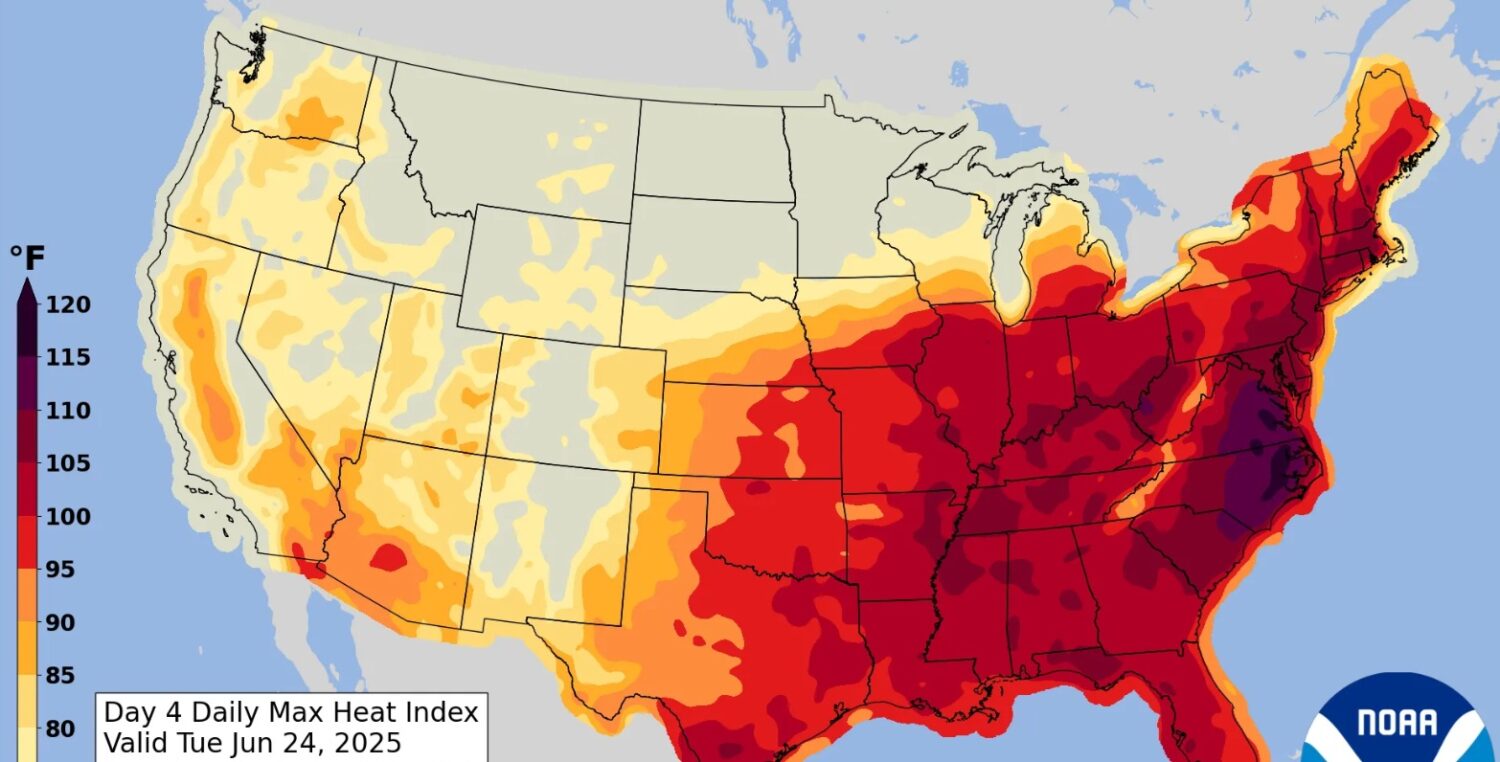|
|
|
Happy Friday!
June 27, 2025
|
|
|
|
The Energy Right team visited six communities, sitting in on and participating with local officials, interested public, and more on our mission for clean energy the Right Way.
|
|
|
|
|
|
|
|
Heat & Energy Demands Rise
|
 |
|
|
|
PJM, the grid operator responsible for electricity across the Mid-Atlantic and parts of the Northeast—including Virginia—is facing mounting reliability concerns as it heads into a sweltering summer. With energy demand climbing rapidly due to extreme heat and growing usage, PJM recently issued back-to-back Maximum Generation and Load Management Alerts. These alerts prompted power plants to delay maintenance and brace for full-capacity operation while warning large users to prepare for demand reductions. On peak days, electricity use spiked to nearly 161,000 megawatts, far above the seasonal forecast, triggering emergency protocols and activating nearly 8,000 megawatts of demand response to stabilize the system.
This strain is just the most recent warning sign among many. PJM officials have acknowledged the region is nearing a critical juncture where energy demand could begin to outpace available supply. That prospect poses a significant threat to grid reliability across all 13 states under PJM’s jurisdiction. In response, PJM emphasized that “renewable resources will be more important than ever this summer to maintain reliability,” signaling a broader strategic shift toward embracing flexible and scalable clean energy solutions to close the gap.
As demand surges, solar and battery storage can, and should, play a critical role in helping to aid the energy grid. Solar paired with storage can deliver clean electricity during the day and bank it for use during critical peak hours. Unlike large-scale fossil fuel plants, these systems can be deployed rapidly, helping relieve grid pressure in months, not years. A diversified energy mix that prioritizes quick-to-deploy clean energy offers PJM and the broader region a practical path toward greater resilience, affordability, and long-term grid stability.
|
|
|
|
|
|
Sheep of the Week
|
|
|
 |
|
|
|
Almost all the sheep in this herd are happily munching beneath the solar panels—it’s no surprise to us why farmers utilizing solar on their land are happily working with other farmers to add sheep grazing into the mix.
|
|
|
|
Follow Us
|
|
|
|
|
|
|
|
|
|
Curious Communities? We See Confidence
|
|
|
|
|
In rural counties across the Commonwealth where tradition runs deep and land is often a family’s legacy, change can naturally be met with caution. But recently, a new tone has emerged—one rooted not in resistance, but in curiosity. At numerous recent public meetings, residents voiced thoughtful questions about solar development: How will it affect farmland? What are the long-term implications for property owners? Rather than shutting down the conversation, people leaned in, eager to understand both the benefits and tradeoffs.
That shift matters, both to us personally, and the broader picture of community resilience. In communities where skepticism is common (and often earned from eager ill-planned projects) open dialogue signals a desire for agency, not opposition. Residents aren’t rejecting solar outright—they’re asking for clearer information, better planning, and assurances that decisions today won’t compromise their tomorrow. This engagement tells local officials that constituents are ready to be part of the solution, if there is one.
In this shift, we’ve seen that when people ask questions, they build confidence—in the facts, in each other, and in the process that shapes their future. An informed public is a powerful foundation for smart energy development, long-lasting beneficial decisions, and a more unified Commonwealth.
|
|
|
 |
|
Prince Edward County Board and Planning Commission
|
|
|
|
|
|
|
|
|
|
This week our team went to Albemarle, Buckingham, Charlotte, Prince Edward, Southampton, and Spotsylvania counties!
|
|
|
|
|
|
|
 |
|
Wythe County, VA
|
|
|
|
This week, while on the road visiting communities, Energy Right had the opportunity to stop in and take a look at the ongoing completion of a solar facility in Wythe County. This project will generate upwards of 70 MW of cost-effective, reliable energy, while also preserving rural views and landscapes.
|
|
|
|
|
|
|
|
Electricity prices soar as US regional grids wobble from extreme heat
– Reuters
|
|
This week’s scorching heat sent U.S. regional grid operators into high alert, with extreme temperatures surpassing 100 °F prompting grid strain across the eastern half of the country. New York ISO warned of emergency actions as reserves hit dangerously low levels, while PJM initiated voluntary consumer curtailments and leveraged demand-response programs to balance supply.
The Department of Energy instructed Duke Energy to increase output from specific plants by up to 1,000 MW during peak hours. These combined efforts—cutting maintenance, importing energy, activating standby units, and managing demand—helped avert rolling blackouts. These events highlight the critical need for grid resilience and diversified clean energy storage to ensure reliability during future inevitable demand spikes.
|
|
|
|
|
|
|
|
|
|
NEXT WEEK
We’ll be traveling to Fauquier, Giles, and Lunenburg counties, as well as Virginia Beach.
|
|
|
|
|
|
|
|
|
|
Chesapeake Bay Foundation Virginia Staff Attorney Patrick Fanning issued the following statement:
“The regulations strike an important balance, protecting forest cores and farms while we accelerate renewable energy deployment to reach Virginia Clean Economy Act goals.
“The solar mitigation regulations will improve utility scale solar facility siting, help developers avoid our highest conservation value lands, and create a flexible framework for mitigation where avoidance is not feasible. Where it is required, importantly, mitigation in the form of permanent conservation easements will protect prime farm and forest lands while advancing clean energy.”
|
|
|
|
|
|
|

